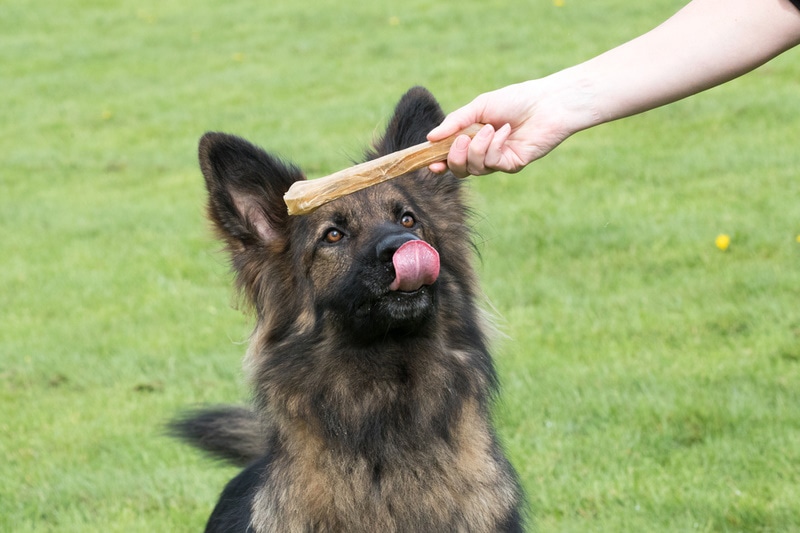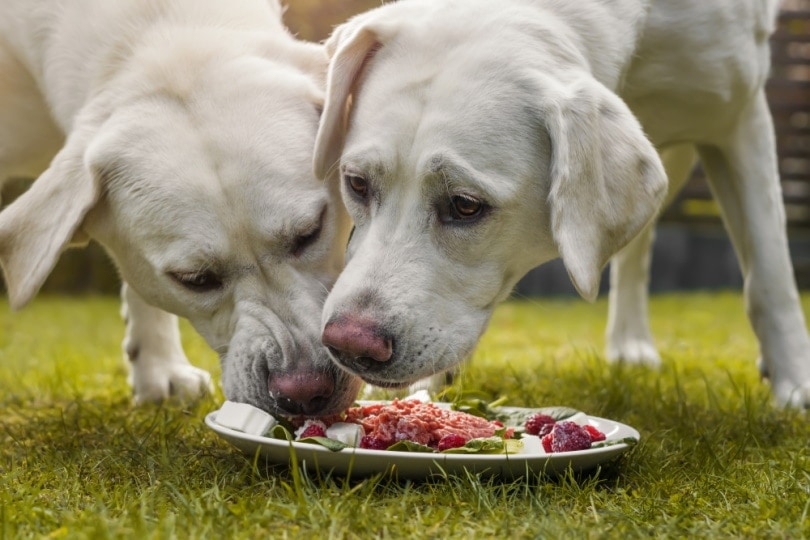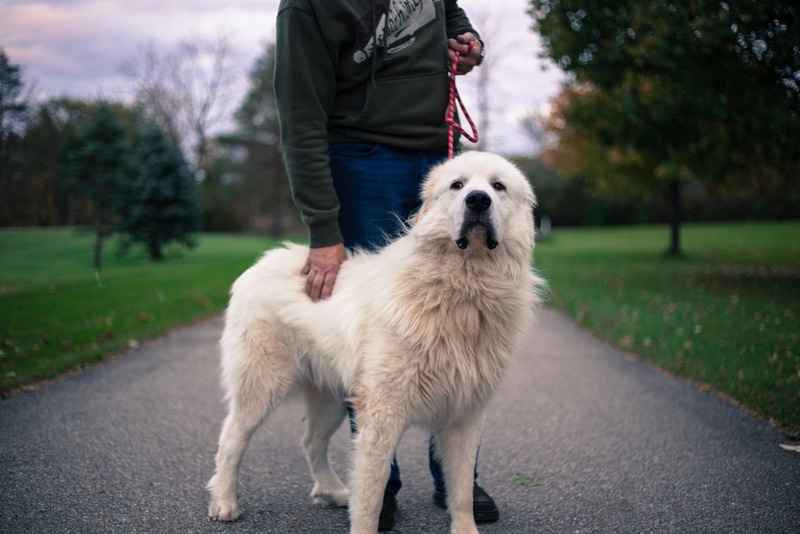Do Dogs Have Taste Buds? Vet-Reviewed Facts & FAQ
Updated on

Taste plays a huge part in how humans experience food. We typically won’t eat things that we don’t find tasty, but can the same be said about our canine family members? Dogs eat all sorts of strange things—sand, grass, paper, rocks, socks, toys, and even their own excrement. These items can’t possibly taste good, so you’re probably wondering if dogs have a sense of taste at all.
Of course, dogs have taste buds, but their tendency to eat bizarre non-food items is typically tied to their curiosity or an insatiable need to chew rather than toward taste.
Keep reading to learn more about what flavors dogs prefer and how scent is tied to their ability to taste.
Do Dogs Have Taste Buds?
Dogs have taste buds on their tongues, just like humans. They are found on the small tongue bumps known as the papillae. While their sense of taste isn’t nearly as sharp as ours, it’s one of the earliest senses that puppies develop.
Dogs have taste buds throughout their tongue and the back of their throat.

What Can Dogs Taste?
Dogs only have around 1,700 taste buds, compared to humans’ 9,000. But, like us, they can identify tastes like sweet, sour, salt, and bitter. Taste buds on different areas of a dog’s tongue are more sensitive to some flavors than others.
Dogs didn’t develop salt receptors in the same way we did. Their ancestral diet is naturally high in meat and salt, so they never needed to seek outside salt sources, making them less interested in salty-tasting food.
They often prefer sweet flavors, which may be because their ancestral diet included wild fruit and veggies.
Unlike us, however, they have unique taste buds that can taste water. So, while we think of water as a tasteless substance, dogs will likely have a much different experience. These special taste buds are on the tip of their tongues, the part that dips into the water and curls under when a dog drinks. They become more sensitive when they are thirsty or after eating.

How Does Scent Play a Part in How Dogs Taste?
Although a dog’s sense of taste is about one-fifth as strong as ours, their sense of smell can be up to 100,000 times better than humans, depending on the breed. Scent plays a huge role in how a dog experiences their food and the entire world. An item’s scent enhances how it tastes.
In addition, dogs have a special scent organ on their palate that increases their sense of smell and helps them ‘taste’. Because their sense of smell is so powerful, most dogs can intuitively know if something will be safe to eat simply by smelling it. This also explains why dogs are often drawn more to strongly scented foods; the more it smells, the more appealing they find it to be.
If a dog loses its ability to smell, it may not show interest in its food and will need a little encouragement to eat.
What Do Dogs Not Enjoy the Taste Of?
Most dogs will avoid spicy, sour, or bitter food. This is why many taste deterrents use bitter or spicy flavors to discourage chewing. Dogs will sometimes reject medications if they taste too bitter, too.
Capsaicin, the compound found in spicy foods that causes the heat, can cause physical reactions in dogs even though they can’t taste much of the flavor. They may even experience the burning sensation by smelling spicy food.

Final Thoughts
Dogs have taste buds just like we do, though theirs work a little differently than ours. They can taste many of the same things we can, though they are more sensitive to some flavors than others. Dogs rely heavily on their heightened sense of smell to help them taste their food and will have their own individual food preferences based on taste and smell.
Featured Image Credit: Nicky Rhodes, Shutterstock












